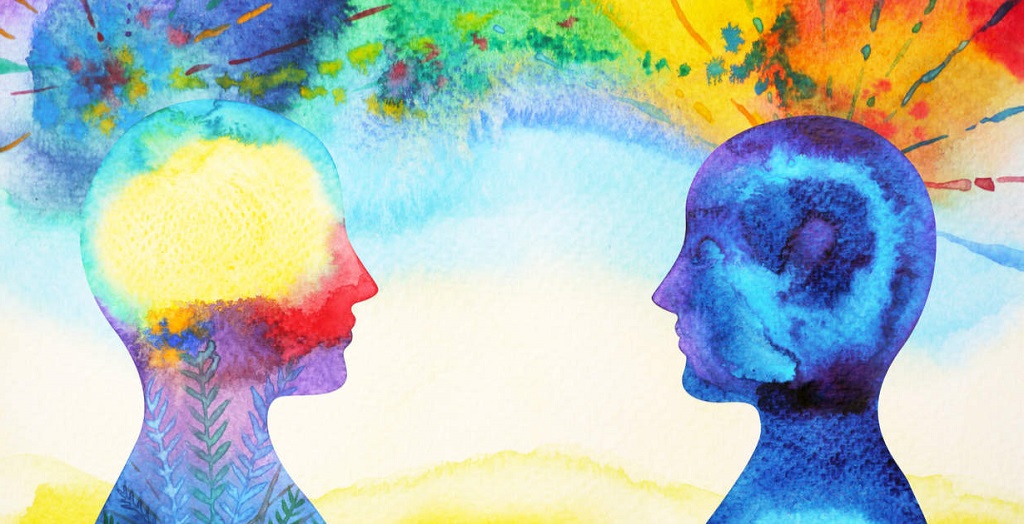Art therapy is a powerful and transformative form of therapy that combines the creative process of making art with psychological exploration and healing. It offers individuals a unique and expressive way to communicate their thoughts, feelings, and experiences. In this article, we will explore the concept of art therapy, its therapeutic process, its psychological impact, and its benefits for various demographics. We will also delve into the science behind art therapy and take a closer look at its neurological effects and its relationship with mental health disorders.
The Concept of Art Therapy
Art therapy can be defined as a non-verbal form of therapy that uses art materials and creative expression to enhance mental, emotional, and physical well-being. Through this process, individuals are able to tap into their inner thoughts, emotions, and memories, even when they may be difficult to verbalize. It provides a safe and supportive environment for exploration, self-discovery, and healing.
Defining Art Therapy
Art therapy is often used in conjunction with traditional talk therapy to supplement and enhance the therapeutic process. It can take various forms, such as painting, drawing, sculpting, and collage-making, allowing individuals to choose the medium that resonates with them the most.
Painting, for example, can be a way for individuals to explore their emotions and experiences through color and brushstrokes. The act of applying paint to a canvas can be both soothing and empowering, allowing individuals to externalize their inner world and gain a sense of control over their emotions. Drawing, on the other hand, can provide a sense of focus and concentration, allowing individuals to channel their thoughts and feelings into a tangible form.
The History and Evolution of Art Therapy
Art therapy has its roots in the early 20th century, when psychiatrists and psychologists began to recognize the therapeutic potential of art-making. Influential figures such as Carl Jung and Margaret Naumburg explored the use of art as a means of self-expression and psychological healing. They believed that art had the power to tap into the unconscious mind and reveal hidden emotions and conflicts.
It was not until the 1940s that art therapy gained recognition as a formal therapeutic discipline. Adrian Hill, a British artist, coined the term “art therapy” and used it to describe the healing potential of art-making. Since then, art therapy has continued to evolve and expand, incorporating various theories and approaches from psychology, counseling, and the arts.
Today, art therapy is widely practiced in clinical and non-clinical settings around the world. It is used to support individuals of all ages and backgrounds, from children with developmental disabilities to adults struggling with mental health issues. Art therapists work in a variety of settings, including hospitals, schools, community centers, and private practices, using art as a tool to promote self-expression, healing, and personal growth.
The Therapeutic Process of Art Therapy
In art therapy, there are various techniques that therapists employ to guide patients through their healing journey. One such profound method is the charcoal self portrait. This technique delves deep into one’s self-awareness and identity, allowing individuals to confront, understand, and express their inner emotions and challenges.
For those interested in immortalizing their charcoal masterpieces, Memorialize Art is an exceptional platform specializing in personalized portraits. Their expertise not only preserves the raw emotions captured in these artworks but also celebrates the therapeutic progress and self-discovery achieved through art therapy.
The Role of the Art Therapist
The art therapist is trained to interpret and facilitate the art-making process, helping clients gain insights and navigate through their emotions. They are skilled in creating a therapeutic alliance with their clients, establishing trust and rapport to promote a healing environment.
Different Art Therapy Techniques
Art therapy employs various techniques to address specific therapeutic goals. Some examples include art journaling, mandala creation, and guided imagery. These techniques allow individuals to explore their thoughts and emotions from different angles, providing a deeper understanding of themselves and their experiences.
The Psychological Impact of Art Therapy
Art therapy has been shown to have profound psychological benefits, impacting emotional well-being and cognitive functioning.
Art Therapy and Emotional Healing
The process of creating art provides a visual representation of inner experiences, facilitating emotional expression and release. It can help individuals explore and make sense of complex emotions, trauma, grief, and loss. By externalizing these emotions through art, individuals can experience catharsis and find healing.
Cognitive Benefits of Art Therapy
Engaging in art-making stimulates cognitive processes such as problem-solving, decision-making, and critical thinking. It encourages individuals to explore different perspectives and develop new ways of thinking. Art therapy has also been shown to improve memory, attention, and concentration.
Art Therapy and Various Demographics
Art therapy is a versatile therapeutic approach that can be adapted to meet the unique needs of different demographics.
Art Therapy for Children
Children often struggle to express their thoughts and emotions verbally. Art therapy provides them with a safe and supportive space to communicate and process their experiences. It promotes self-esteem, social skills, and emotional regulation.
Art Therapy for Adults
For adults, art therapy can be a powerful tool for self-exploration and personal growth. It can help individuals gain insight into their relationships, personal challenges, and aspirations. Art therapy can also serve as a form of stress relief and self-care.
Art Therapy for the Elderly
Art therapy has shown great promise in improving the quality of life for the elderly. It encourages self-expression, reminiscence, and socialization. It can help combat feelings of loneliness and depression, while stimulating cognitive functioning.
The Science Behind Art Therapy
Recent research has revealed the neurological effects of art therapy and its potential for supporting mental health.
Neurological Effects of Art Therapy
Engaging in art-making activates various regions of the brain associated with emotional regulation, self-reflection, and creativity. This stimulation can enhance neuroplasticity, leading to improved mental health outcomes.
Art Therapy and Mental Health Disorders
Art therapy has been shown to be beneficial in the treatment of various mental health disorders, such as anxiety, depression, trauma-related disorders, and eating disorders. It provides individuals with an alternative and creative way to process and express their struggles.
Takeaway
Art therapy transcends the limitations of traditional talk therapy by tapping into the power of the creative process. Through this transformative therapy, individuals are able to explore their innermost thoughts and emotions, foster emotional healing and personal growth, and gain a deeper understanding of themselves. Whether it’s used with children, adults, or the elderly, art therapy offers a therapeutic journey that promotes transformation and well-being.
For those who create masterpieces during their therapeutic sessions, Memorialize Art offers a special way to cherish and preserve these emotional artworks. The fascinating science behind art therapy further supports its efficacy in promoting mental health and emotional well-being. So, if you’re seeking a unique and powerful form of therapy, consider embarking on the transformative journey of art therapy, and remember that every masterpiece has a place at Memorialize Art.




